Biomimetic Adhesives
The remarkable ability that geckos have to easily get attached to any kind of surface regardless of its orientation, smooth or rough, clean or dirty, wet or dry has long fascinated humans. Gecko feet have a unique geometrical structure and mechanical properties that have extensively motivated research from different perspectives by many research groups. Even when some of the principles in gecko adhesion have been elucidated, some other features are still under study. Noteworthy characteristics of gecko adhesion as no leaving residues, no degradation over time and self-cleaning challenge researchers' efforts to mimic and adapt this technology in practical applications.
Inspired in features of gecko's setae, our research group has been working in the development of artificial microstructural biomimetic fibrillar adhesives. New designs and experimental studies on artificial mushroom-like fiber adhesives have been done to analyze performance in adhesion. In [1] for instance, the effect of the geometry of the cap has been studied. By means of theoretical and numerical investigations regarding the pull-off mechanism of this family of fibers, we have found evidence to suggest that adherence is primarily controlled by tip size and edge angle on pull-off.
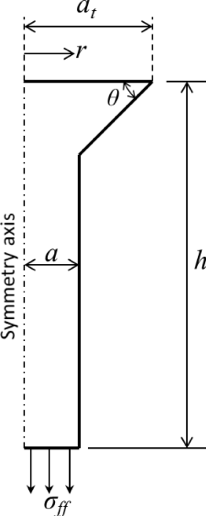
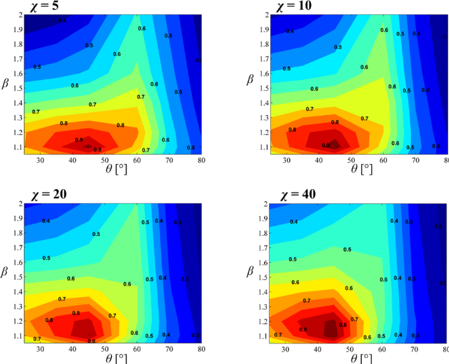
Most commonly observed synthetic fibrillar adhesive are able to strongly and repeatedly attach to smooth surface. However, most of them perform badly in rough surfaces. This fact motivated us to successfully develop a monolithic and functionally graded fiber array microfibrillar adhesives [2]. These microfibrillar adhesive fibers combine stiff stalks with a thin soft distal layer at the top. While the soft layer improves the adaptability to attach into irregular surfaces, the superior stiffness of the stalk provides the strength to resist the preload needed to get contact.
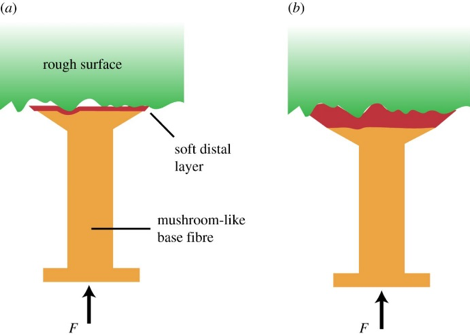
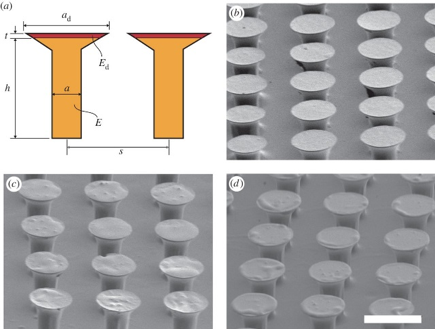
It has been observed in geckos and other organisms that the tilt/curvature of stiff fibers provides them with the compliance and the directional adhesion properties to attach strongly and efficiently to a surface. Recent studies have revealed that many of such organisms also feature materials with a graded elastic modulus that is tailored towards improving the contact area without sacrificing the fiber density. In particular, for ladybird beetles, a research has shown that the adhesive setae feature a material gradient such that the elastic modulus of the material at the junction between the stalk and the divergent distal end is close to minimum. This soft material acts like a flexible joint, improving the bending compliance of the tip. We have successfully mimicked the curvature of the fiber and the flexible joint feature using tilted, mushroom-like, stiff fibers comprised of a stiff stalk, a soft mushroom-like cap and a flexible joint-like element in between. Experimental results have shown bent fibers with soft joint-like element to have superior performance in shear and, thanks to the mushroom-like caps, superior performance in pull-off force.
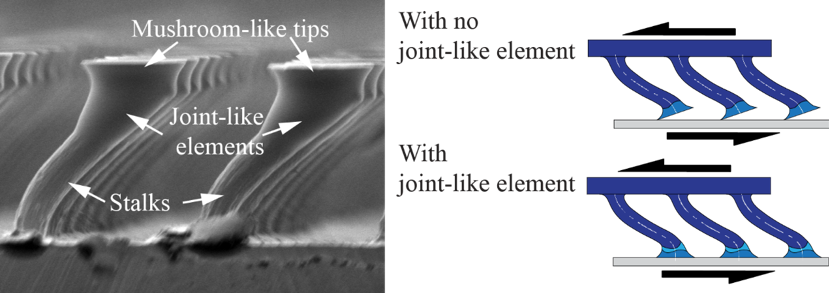
[1] Bioinspired Mushroom-Like Fiber Adhesives 2017. S Gorumlu, B Aksak
[2] Sticking to rough surfaces using functionally graded bio-inspired microfibres 2017
[3] The effect of flexible joint-like elements on the adhesive performance of nature-inspired bent mushroom-like fibers
BIOMS Lab
-
Address
Texas Tech University, 2500 Broadway, Lubbock, TX 79409 -
Phone
806.742.2011 -
Email
webmaster@ttu.edu
